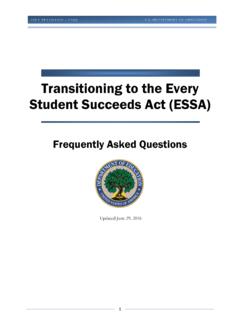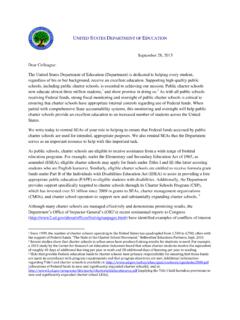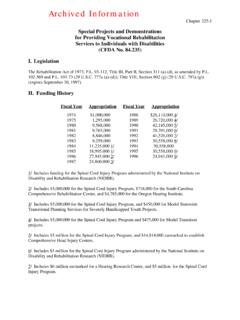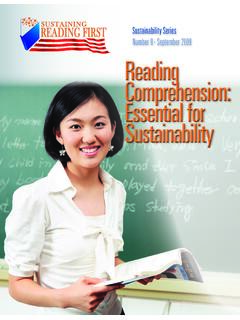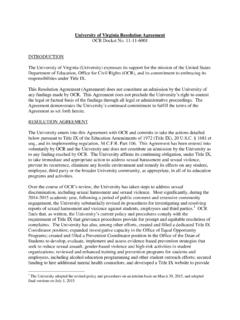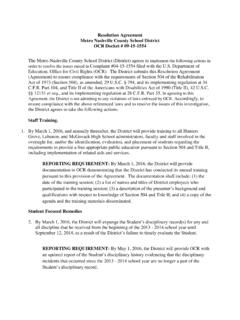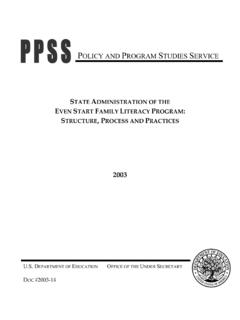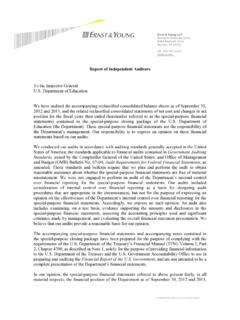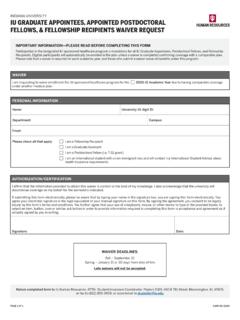Transcription of Examples of Policies and Emerging Practices for Supporting ...
1 Examples of Policies and Emerging Practices for Supporting transgender students Department of Education Office of Elementary and Secondary Education Office of Safe and Healthy students May 2016 Department of Education Office of Elementary and Secondary Education Office of Safe and Healthy students Ann Whalen Senior Advisor to the Secretary, Delegated the Duties of the Assistant Secretary, Office of Elementary and Secondary Education David Esquith Director, Office of Safe and Healthy students May 2016 This resource is in the public domain. Authorization to reproduce it in whole or in part is granted. The guide s citation should be: Department of Education, Office of Elementary and Secondary Education, Office of Safe and Healthy students , Examples of Policies and Emerging Practices for Supporting transgender students (May 2016).
2 This guide is also available on the Office of Safe and Healthy students website at Any updates to this guide will be available at this website. If you need technical assistance, please contact the Office of Safe and Healthy students at: Availability of Alternate Formats Requests for documents in alternate formats such as Braille or large print should be submitted to the Alternate Format Center by calling 202-260-0852 or by contacting the 504 coordinator via e-mail at Notice to Limited English Proficient Persons If you have difficulty understanding English you may request language assistance services for Department information that is available to the public. These language assistance services are available free of charge. If you need more information about interpretation or translation services, please call 1-800-USA-LEARN (1-800-872-5327) (TTY: 1-800-437-0833), or e-mail us at Or write to Department of Education, Information Resource Center, LBJ Education Building, 400 Maryland Ave.
3 SW, Washington, DC 20202. i Examples of Policies and Emerging Practices for Supporting transgender students The Department of Education ( ED ) is committed to providing schools with the information they need to provide a safe, supportive, and nondiscriminatory learning environment for all students . It has come to ED s attention that many transgender students ( , students whose gender identity is different from the sex they were assigned at birth) report feeling unsafe and experiencing verbal and physical harassment or assault in school, and that these students may perform worse academically when they are harassed. School administrators, educators, students , and parents are asking questions about how to support transgender students and have requested clarity from ED.
4 In response, ED developed two documents: ED s Office for Civil Rights and the Department of Justice s Civil Rights Division jointly issued a Dear Colleague Letter ( DCL ) about transgender students rights and schools legal obligations under Title IX of the Education Amendments of Any school that has questions related to transgender students or wants to be prepared to address such issues if they arise should review the DCL. ED s Office of Elementary and Secondary Education compiled the attached Examples of policies2 and Emerging practices3 that some schools are already using to support transgender students . We share some common questions on topics such as school records, privacy, and terminology, and then explain how some state and school district Policies have answered these questions.
5 We present this information to illustrate how states and school districts are Supporting transgender students . We also provide information about and links to those Policies at the end of the document, along with other resources that may be helpful as educators develop Policies and Practices for their own schools. 1 20 1681-1688; Dear Colleague Letter: transgender students (May 13, 2016), 2 In this document, the term policy or Policies refers generally to Policies , guidance, guidelines, procedures, regulations, and resource guides issued by schools, school districts, and state educational agencies. 3 ED considers Emerging Practices to be operational activities or initiatives that contribute to successful outcomes or enhance agency performance capabilities.
6 Emerging Practices are those that have been successfully implemented and demonstrate the potential for replication by other agencies. Emerging Practices typically have not been rigorously evaluated, but still offer ideas that work in specific situations. ii Each person is unique, so the needs of individual transgender students vary. But a school policy setting forth general principles for Supporting transgender students can help set clear expectations for students and staff and avoid unnecessary confusion, invasions of privacy, and other harms. The education community continues to develop and revise Policies and Practices to address the rights of transgender students and reflect our evolving understanding and the individualized nature of transgender students needs.
7 This document contains information from some schools, school districts, and state and federal agencies. Inclusion of this information does not constitute an endorsement by ED of any policy or practice, educational product, service, curriculum or pedagogy. In addition, this document references websites that provide information created and maintained by other entities. These references are for the reader s convenience. ED does not control or guarantee the accuracy, relevance, timeliness, or completeness of this outside information. This document does not constitute legal advice, create legal obligations, or impose new requirements. iii Table of Contents Student Transitions .. 1 1. How do schools find out that a student will transition? .. 1 2. How do schools confirm a student s gender identity?
8 1 3. How do schools communicate with the parents of younger students compared to older transgender students ? .. 2 Privacy, Confidentiality, and Student Records .. 4 4. How do schools protect a transgender student s privacy regarding the student s transgender status? .. 4 5. How do schools ensure that a transgender student is called by the appropriate name and pronouns? .. 5 6. How do schools handle requests to change the name or sex designation on a student s records? .. 6 Sex-Segregated Activities and Facilities .. 7 7. How do schools ensure transgender students have access to facilities consistent with their gender identity? .. 7 8. How do schools protect the privacy rights of all students in restrooms or locker rooms? .. 7 9. How do schools ensure transgender students have the opportunity to participate in physical education and athletics consistent with their gender identity?
9 8 10. How do schools treat transgender students when they participate in field trips and athletic trips that require overnight accommodations? .. 9 Additional Practices to Support transgender students .. 10 11. What can schools do to make transgender students comfortable in the classroom? .. 10 12. How do school dress codes apply to transgender students ? .. 10 13. How do schools address bullying and harassment of transgender students ? .. 11 14. How do school psychologists, school counselors, school nurses, and school social workers support transgender students ? .. 11 15. How do schools foster respect for transgender students among members of the broader school community? .. 12 16. What topics do schools address when training staff on issues related to transgender students ?
10 12 17. How do schools respond to complaints about the way transgender students are treated? .. 13 iv Terminology .. 14 18. What terms are defined in current school Policies on transgender students ? .. 14 19. How do schools account for individual preferences and the diverse ways that students describe and express their gender?.. 15 Cited Policies on transgender 16 Select Federal Resources on transgender students .. 18 1 Student Transitions 1. How do schools find out that a student will transition? Typically, the student or the student s parent or guardian will tell the school and ask that the school start treating the student in a manner consistent with the student s gender identity. Some students transition over a school break, such as summer break.
